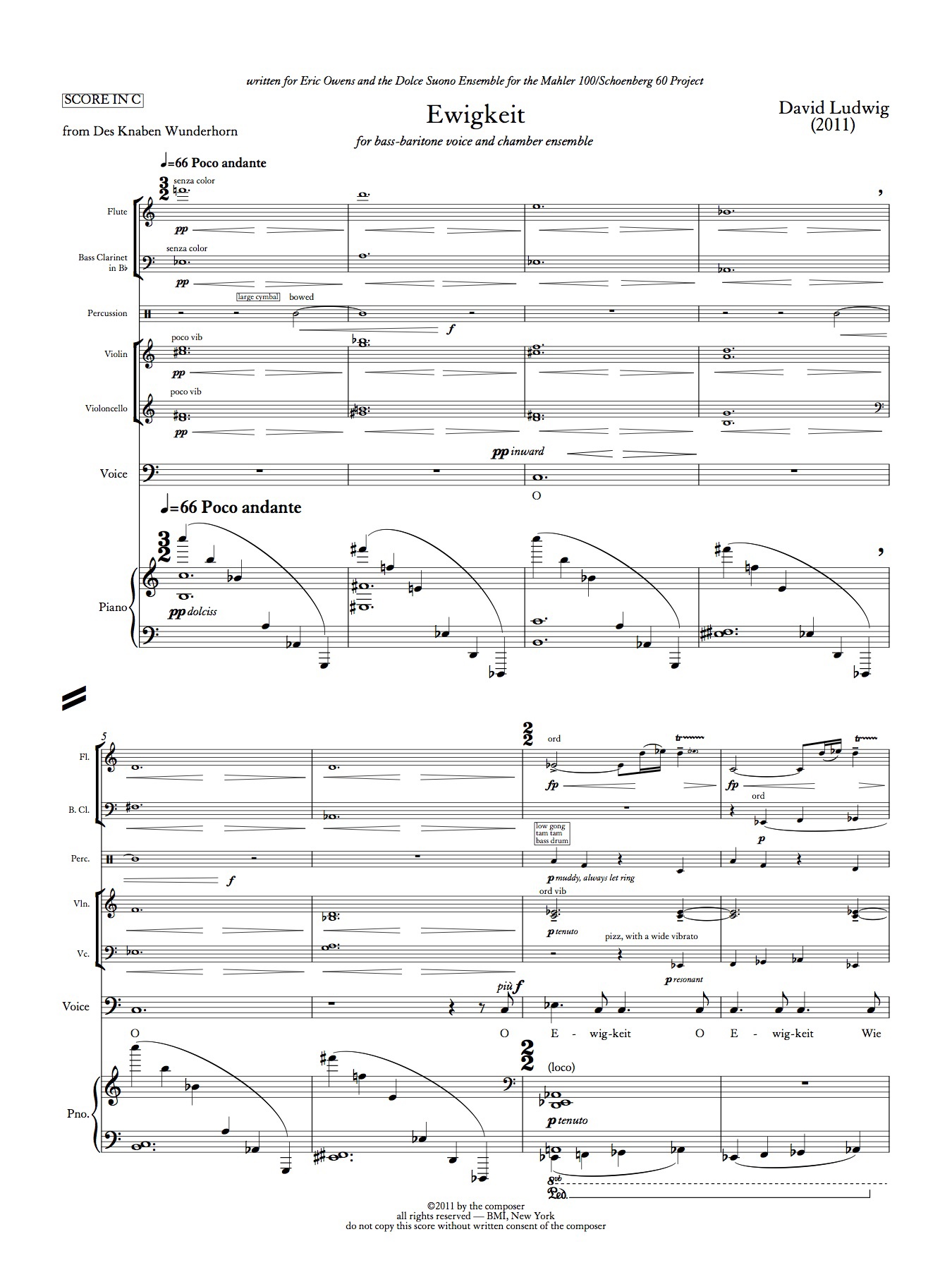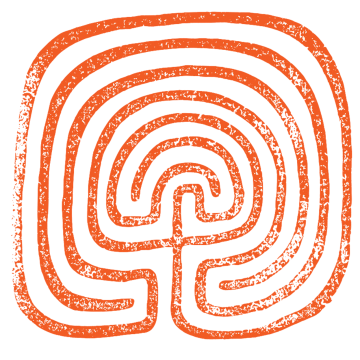Ewigkeit






Ewigkeit
Ewigkeit (2011)
-Baritone + fl, cl, vln, vcl, pno, perc
-Duration: 6'
-Commissioned by the Dolce Suono Ensemble with Eric Owens
Program Notes
When Dolce Suono flutist and founder Mimi Stillman approached me to write a piece for her Mahler 100/Schoenberg 60 project, she suggested Ewigkeit from the poems of Das Knaben Wunderhorn. I looked through the collection and agreed that this was one of the best poems to set in honor of Mahler. What better subject than “Eternity” to nod to Mahler’s grand and cosmic philosophy, not to mention the staying power of his music!
As much as the syllabic setting of the song owes to Mahler’s text setting, the colors come from Schoenberg. I lived in Moedling, Vienna for a year in college and got to study in Schoenberg’s house with one of Schoenberg’s last students (my grandfather studied composition in the same house; all of this music and language speaks personally to me). In writing this song, I thought a lot about one of my favorite German words: “Klangfarbenmelodie.” Schoenberg’s notion of “sound-color melody,” where melodies and harmonies are united by a seamless transition of musical colors, was influential to just about every composer in some way, including me!
The piece opens with long chords and a returning piano motive that cycles through all twelve notes, reincarnating itself in each appearance. Like many of Mahler’s songs, the vocal line is straightforward, with a churning accompaniment underneath. The music comes to a discordant stop on the line, “as long as God exists, there will be Hell’s pain.” But in the end, the music turns to awe in the final lines: “there will be Heaven’s Joy. Oh enduring sadness, oh enduring sorrow.”
Ewigkeit was written for Eric Owens and the Dolce Suono ensemble with warm wishes for the success of their exciting Mahler 100/Schoenberg 60 project.
Press
The lineup included David Ludwig’s arresting, dramatically hued “Ewigkeit” (“Eternity”), a setting of a text from the “Knaben Wunderhorn” poems that blended Mahlerian vocal lines and Schoenberg-like instrumental colors. –The New York Times
